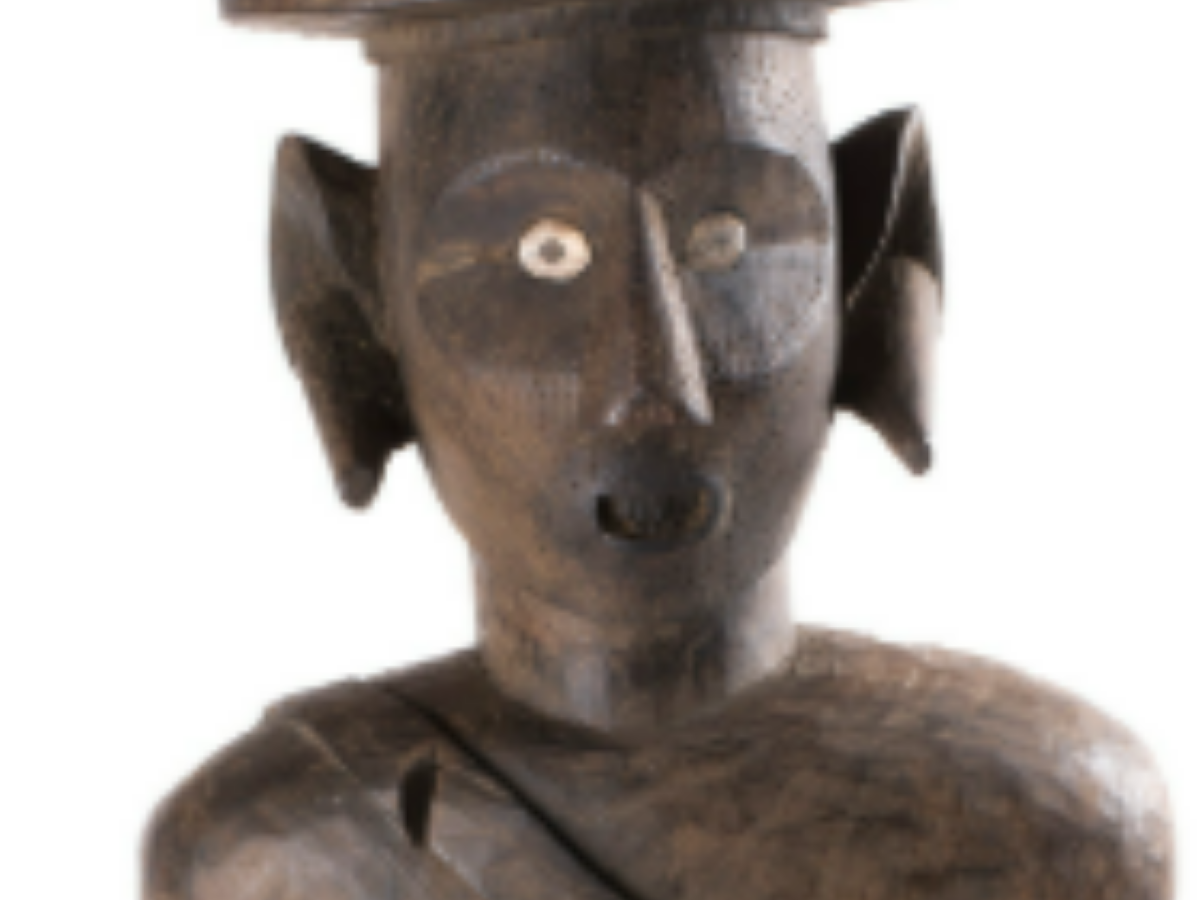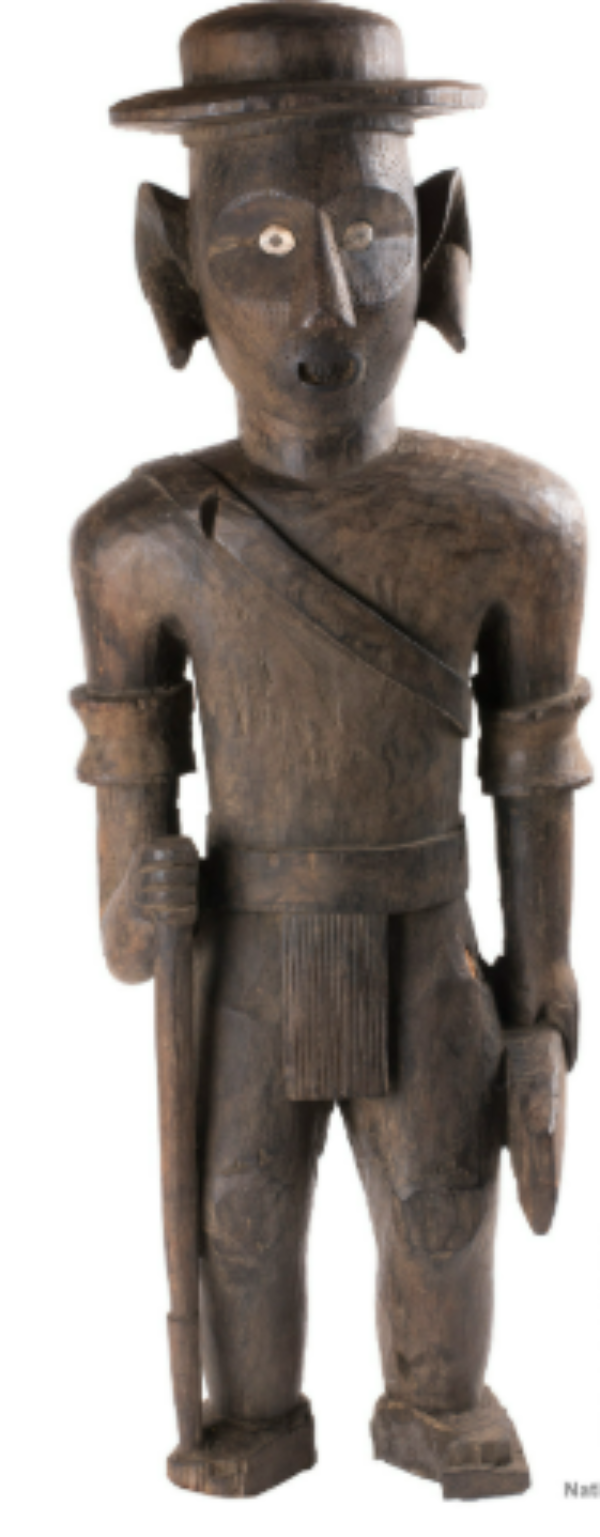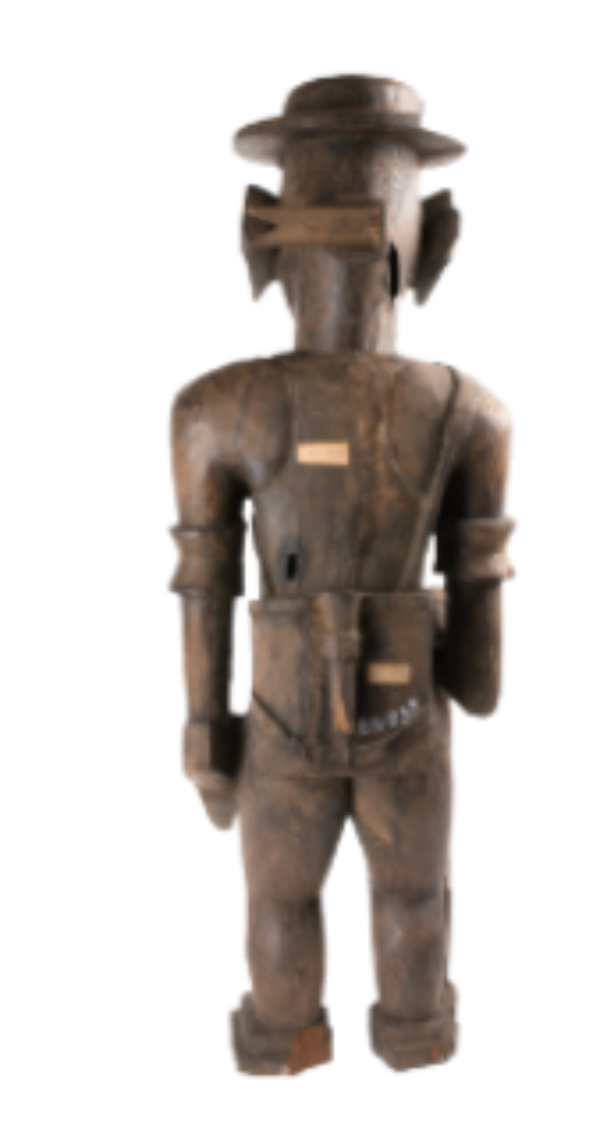State
Tribe Name
Art Type
short description
Konyak Warrior sculpture
Konyak tribesmen chiseled a Tribesman's figure for such a chief incarnation into wood, and the sculpture is a fine example of Naga wood work. This free-standing sculpture represents a warrior dressed in full battle gear, stick in one hand and sword (dao) in the other. His role as hunter and protector of his people is signified by a back quiver strung across with a cross strap.
Konyak tribesmen chiseled a Tribesman's figure for such a chief incarnation into wood, and the sculpture is a fine example of Naga wood work. This free-standing sculpture represents a warrior dressed in full battle gear, stick in one hand and sword (dao) in the other. His role as hunter and protector of his people is signified by a back quiver strung across with a cross strap.
Thumbnail

Filter Postion
Left
Filter Background
Off
Theme
Filter Header Image

content
Image

description
Konyak tribesmen chiseled a Tribesman's figure for such a chief incarnation into wood, and the sculpture is a fine example of Naga wood work. This free-standing sculpture represents a warrior dressed in full battle gear, stick in one hand and sword (dao) in the other. His role as hunter and protector of his people is signified by a back quiver strung across with a cross strap.
The sculpture of the warrior is designed to blend ethnic and Western influences. While the native warrior dress, heavy armbands, amphora-shaped earrings, and lower garments with a center pleat are distinctively indigenous, an adopted rakish hat pays homage to Western culture. This blending serves to underscore the history of inclusion of the Konyak tribe, especially under the British regime.
The sculpture of the warrior is designed to blend ethnic and Western influences. While the native warrior dress, heavy armbands, amphora-shaped earrings, and lower garments with a center pleat are distinctively indigenous, an adopted rakish hat pays homage to Western culture. This blending serves to underscore the history of inclusion of the Konyak tribe, especially under the British regime.
Image Mode
landscape
Image

description
Ideally, tattooing the face is a sign of prestige, honouring a Konyak head-hunter, one of the most important aspects of the sculpture. This was a practice of some dignity for the Konyaks, wherein men earned tattoos for successfully taking in an enemy head. So these markings symbolized courage, social status, and tribal identity.
The Konyak tribe, besides being wood-carving masters, maintains its heritage through sculpture, textiles, and artifacts. This warrior sculpture narrates history, art, and martial traditions of the Konyaks, thereby giving a glimpse into the legacy of headhunters in Nagaland.
The Konyak tribe, besides being wood-carving masters, maintains its heritage through sculpture, textiles, and artifacts. This warrior sculpture narrates history, art, and martial traditions of the Konyaks, thereby giving a glimpse into the legacy of headhunters in Nagaland.
Image Mode
landscape
promoted
On
Verified
Off
